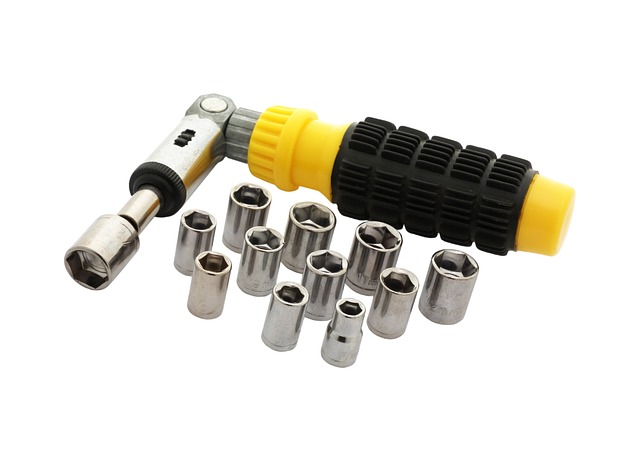Air leaks in homes cause significant energy waste, leading to higher heating/cooling costs. Sealing gaps around doors/windows, outdated weatherstripping, and improving insulation with smart thermostats dramatically reduces utility bills. These advanced devices monitor indoor temperature shifts to detect leakages, offering real-time alerts for efficient sealing. Implementing these simple steps contributes to a greener environment while enhancing home comfort.
Sealing air leaks is a powerful strategy to enhance energy performance and reduce utility bills. This article guides you through the process, from understanding the impact of air leaks on your energy consumption to implementing practical steps to fix them. We explore how smart thermostats play a pivotal role in identifying these leaks, offering an efficient way to optimize your home’s energy use. By the end, discover the long-term benefits and return on investment for improving your home’s energy efficiency.
Understanding Air Leaks and Their Impact on Energy Consumption
Air leaks in your home can be a significant energy drain, leading to higher heating and cooling costs. These leaks occur through various openings, such as gaps around doors and windows, poorly sealed walls, or outdated weatherstripping. Understanding where and how air escapes is crucial for improving your home’s energy efficiency. In today’s digital era, smart thermostats can play a pivotal role in this process by monitoring and automatically adjusting temperature settings to minimize energy consumption.
By sealing these leaks, you create a more airtight space, which means your heating and cooling systems don’t have to work as hard to maintain the desired indoor temperature. This simple step can lead to substantial savings on utility bills over time. Moreover, it helps reduce your carbon footprint, contributing to a greener environment.
The Role of Smart Thermostats in Identifying and Sealing Leaks
Smart thermostats have emerged as powerful tools in the quest for improved energy performance, playing a pivotal role in identifying and sealing air leaks within homes and buildings. These advanced devices go beyond traditional temperature control by continuously monitoring and analyzing indoor environmental data. Through this process, they can detect subtle changes that indicate potential leakages, such as sudden drops in temperature or unusual fluctuations.
Once a leak is identified, smart thermostats provide real-time alerts, allowing homeowners and building managers to take immediate action. This proactive approach enables efficient sealing of these air leaks, resulting in significant energy savings. By effectively minimizing the escape of heated or cooled air, smart thermostats contribute to a more comfortable living environment while reducing utility costs, making them an indispensable component in any comprehensive strategy for enhancing energy efficiency.
Practical Steps to Seal Common Air Leaks Around Your Home
Sealing air leaks is an effective and often straightforward way to improve your home’s energy efficiency, leading to significant cost savings on utility bills. Common areas for leaks include doors, windows, and the attic—these are also places where homeowners can easily make improvements. Start by conducting a thorough inspection, using a flashlight and a moisture meter to identify problem areas. For doors and windows, consider installing weatherstripping or door sweeps; these simple solutions create an airtight seal, preventing cold air from entering and warm air from escaping. Attics can be sealed with specialized foam or tape, blocking gaps around plumbing, electrical wires, and vents.
A smart thermostat can also aid in this process by learning your family’s habits and automatically adjusting temperature settings to reduce energy use when no one is home or during off-peak hours. This technology further enhances energy performance by ensuring your heating and cooling systems aren’t working harder than necessary. Remember, even small leaks can lead to substantial energy losses, so addressing them promptly pays dividends in the long run.
Long-Term Benefits and Return on Investment for Energy Efficiency Measures
Sealing air leaks and improving energy performance is an investment that offers significant long-term benefits. By taking measures to enhance insulation, such as sealing gaps around windows and doors, homeowners can expect reduced energy bills over time. These simple yet effective steps contribute to a more comfortable living environment by maintaining consistent temperatures, which is especially beneficial in extreme weather conditions.
The return on investment (ROI) for energy efficiency measures is another compelling factor. While initial costs for installing smart thermostats or upgrading insulation materials may be higher than traditional options, the long-term savings on utility expenses make it a wise decision. Moreover, many regions offer incentives and rebates for implementing energy-efficient practices, further reducing the overall investment and accelerating the payback period.
Sealing air leaks is a practical and effective strategy to enhance energy performance, reduce utility bills, and promote a more sustainable home environment. By understanding where air leaks occur and implementing simple sealing measures, homeowners can significantly improve their homes’ efficiency. Smart thermostats play a pivotal role in identifying these issues, allowing for targeted and efficient energy management. Investing in these solutions offers long-term benefits, ensuring a comfortable living space while contributing to environmental sustainability and financial savings.
